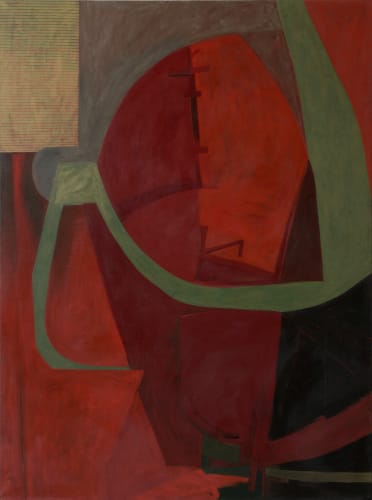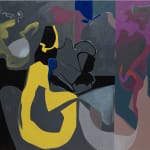Leopold Plotek Stays True to Form
by John Pohl
Esthetics play a supporting role at best in the contemporary art scene. Painters who aspire to recognition as serious artists must first emphasize the idea behind their work.
Those relatively few painters who can make art that is both high-concept and visually beautiful are the ones who are successful both with critics and the public.
The situation is a little more difficult for artists like Leopold Plotek, who put more value on the esthetics of their paintings than their intellectual content.
"l am (an intellectual), but it doesn't help me in the studio," Plotek said last week at the vernissage of an exhibition at Han Art of his early abstract works.
Good painting is a result of intuition and experience, he said, and an intellectual approach is not necessary.
‘‘I don't cram content into my paintings." he said. ignoring the fact that his paintings are full of references to classical art, architecture, philosophy and literature.
Plotek explains: “Why do I love Mozart? It's because the form is so exquisite. Some content is there and it doesn't hurt to know what it is, but it doesn't matter" to the enjoyment of the music.
Similarly, the paintings of Plotek, a Concordia art teacher, do have content. But the references enter the painting through the artist's experience and intuition.
The paintings at Han Art are from 1978 through the 1980s, and are what Plotek calls his “first authentic works" following his student days. A trip to ltaly turned his life around.
“I fell in love with Italian architecture - Alberti, Brunelleschi" and others, he said. On his return to Montreal, he “picked up a charcoal to see if I had anything to say."
Like ltaly's Metaphysical painters of the First World War era, Plotek creates abstract forms that seem both - architectural and figurative. A brooding human presence is felt in the minimalist abstractions, the origin of which could be the corner of a coffee table, he said.
Of the paintings in the show, Plotek noted their large size — typically 72 by 89 inches — as a telling sign of an ambitious artist in his 30s.
And of the play of light and dark in the paintings, he says. “An abiding principle is that a painting needs a beautiful sense of light."


